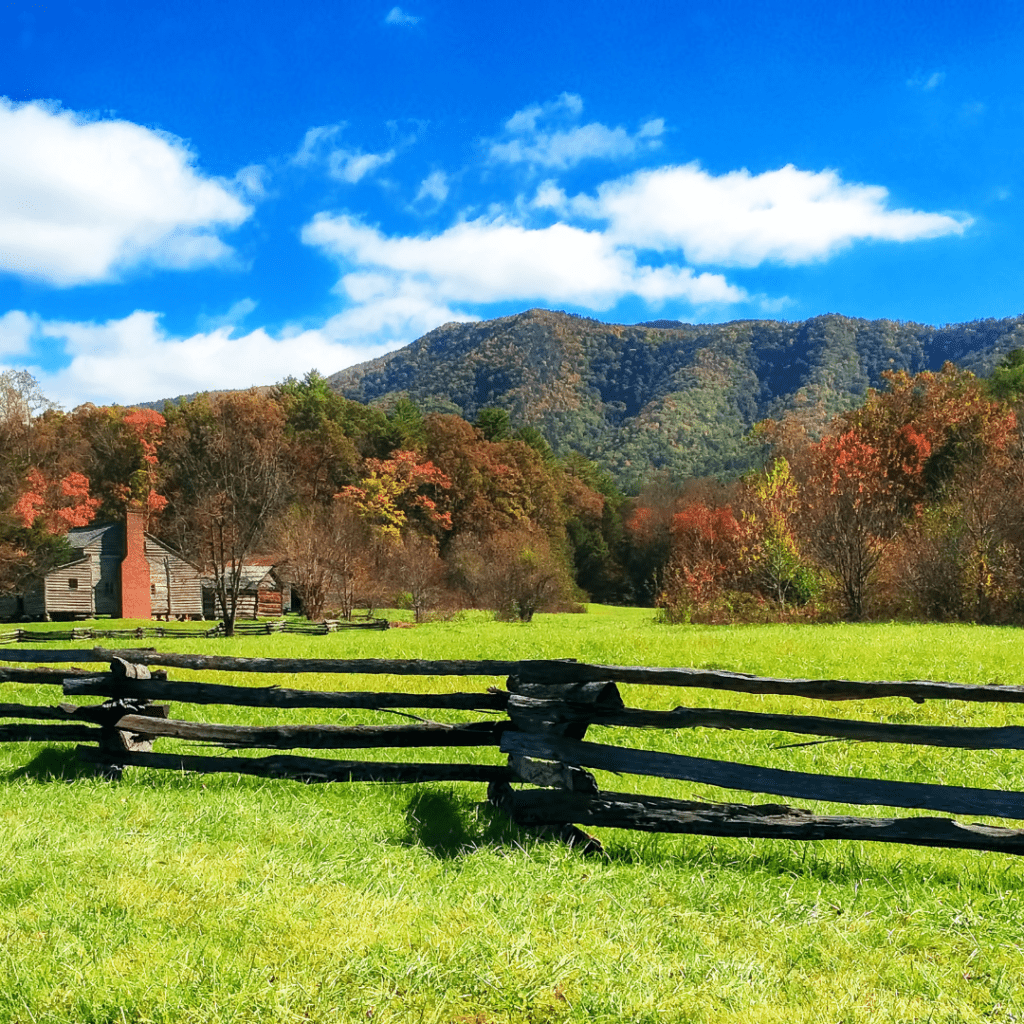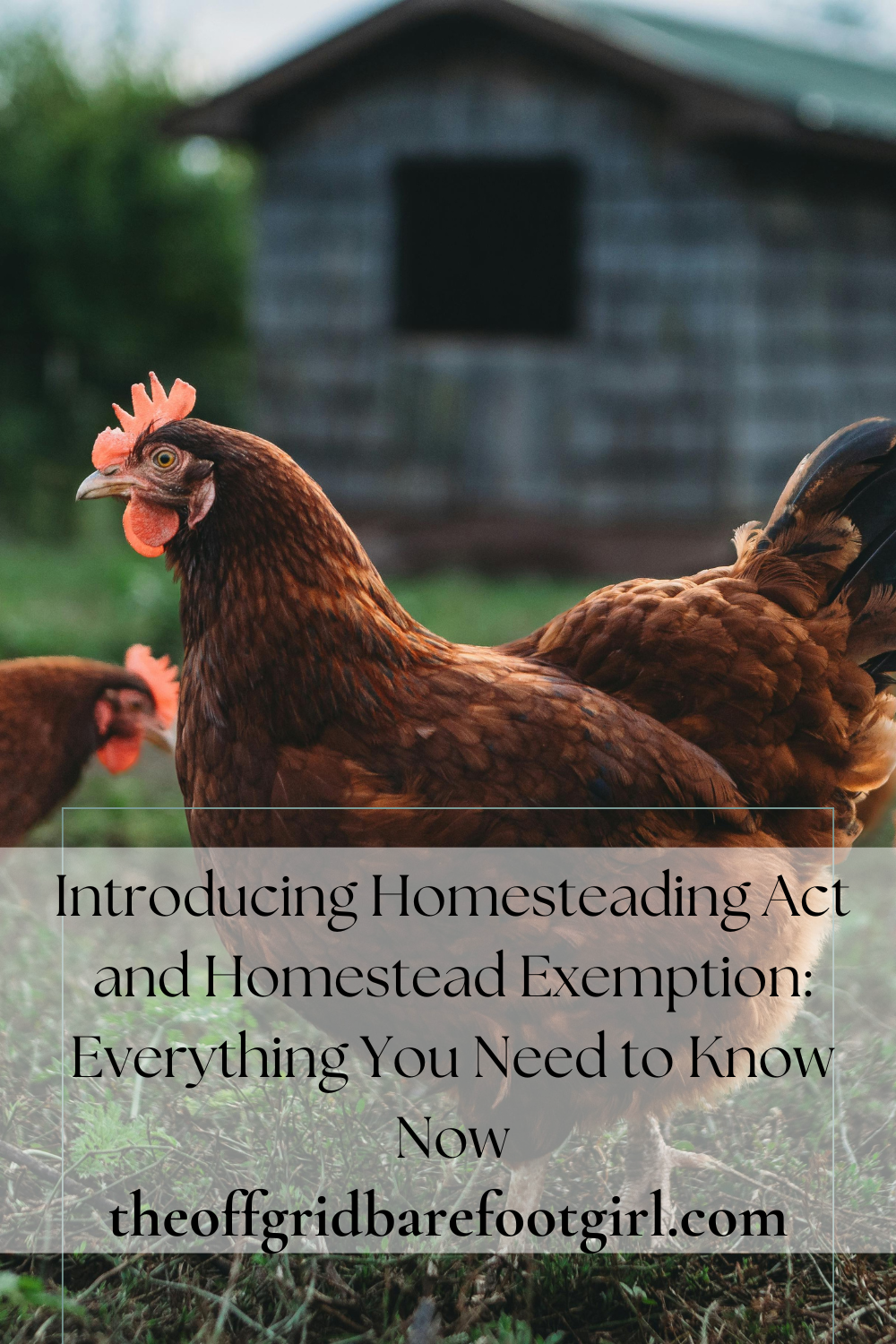Introducing Homesteading Act and Homestead Exemption: Everything You Need to Know Now — learn how these laws protect your property and secure your homestead.
If you’ve ever dreamed of claiming your own land or protecting your home, understanding the Homesteading Act and Homestead Exemption is essential. Introducing Homesteading Act and Homestead Exemption: Everything You Need to Know Now is your guide to the rules, benefits, and practical steps you need to make these laws work for you. From safeguarding your property to maximizing exemptions and building a secure homestead, I’ll break it down in a way that’s easy to understand—so you can take action confidently and protect what matters most!
This is a pinnable post. Tap or hover over any image in this post to pin to your Pinterest Boards.

Understanding the Homesteading Act
The Homesteading Act: A Historical Overview
The Homesteading Act of 1862 was signed into law by President Abraham Lincoln on May 20 of that year. This transformative law was designed to encourage the settlement and development of the western parts of the United States. Essentially, it offered 160 acres of public land—almost for free—to individuals willing to settle and improve it over a period of five years. In return, they had to build a dwelling, cultivate the land, and live on the property during that period.
The core objective of the Homesteading Act was to stimulate an agrarian economy and create an ownership class of self-reliant farmers. More broadly, it was part of the government’s strategy to promote the orderly and democratic settlement of the Western frontier, following the ideology of “Manifest Destiny.”
Eligibility and Impact on American Settlement
The only requirements necessary to receive this generous land grant were that the applicant had to be 21 years or older, be a head of a household, be a US citizen, or intend to become one, and never have taken up arms against the US government. This opened up opportunities for thousands of people, including women, former slaves, and new immigrants.
This legislation resulted in the allocation of land to 1.6 million homesteads across 30 states, making a total of 10% of all U.S. lands. However, despite the opportunity, the Homesteading Act was not without its challenges. Many settlers faced harsh climates, isolation, and economic hardship.
Homestead Exemption: A Modern-Day Homesteading Act
While no longer in effect today, the Homesteading Act’s spirit lives on in a different form: the Homestead Exemption. Unlike the Homesteading Act, the Homestead Exemption is not about settling new lands, but about providing stability and protection to homeowners, particularly those facing financial hardship.
Homestead Exemptions are legal provisions designed to protect the value of the homes of residents from property taxes, creditors, and circumstances arising from the death of the homeowner’s spouse. These exemptions allow homeowners to declare a portion of their property as a “homestead.” This declared homestead is, in many jurisdictions, protected from forced sale by general creditors.
The Differentiating Factors
The Homesteading Act and Homestead Exemption, while they share the root factor of property and ownership, embody quite different aspects. The Homesteading Act was about colonizing new lands and building a base for economic farming activity. In contrast, the Homestead Exemption is a protective policy that shields existing homeowners from particular financial stressors.
In terms of beneficiaries, the Homesteading Act offered opportunities to citizens or future citizens without legacies of land ownership or financial success, creating a more diverse group of landowners. On the other hand, the Homestead Exemption benefits existing homeowners, which can range from middle-class to wealthier individuals and families.
An Introduction to Homesteading Laws
The world of homesteading can be complex, with laws and regulations that can often be confusing. Two frequently misunderstood terms are the Homesteading Act and the Homestead Exemption. Grasping the nuances between these two is crucial to making informed decisions about your property.
Homesteading Laws regulate the claiming and development of small land parcels for personal use. This comprehensive guide provides a detailed overview of the various homesteading laws existing in different regions, understanding their historical context, and outlining the requirements for individuals interested in pursuing this lifestyle. It delves into the legal rights and responsibilities associated with homesteading, such as property ownership, land use restrictions, zoning regulations, and taxation considerations.
Furthermore, it examines how these laws have evolved over time to accommodate changing agricultural practices and urban development. By familiarizing readers with the intricacies of homesteading laws, this introduction aims to equip aspiring homesteaders with valuable knowledge to navigate the legal landscape effectively while embracing self-sufficiency and sustainable living practices.
Exploring the Homestead Exemption
Exploring the Homestead Exemption: Protecting Your Investment
The Homestead Exemption is a beneficial provision for homeowners, offering them a way to reduce the taxable value of their homes. To decode it further, the Homestead Exemption works towards shrinking the taxable worth of a property. This reduction translates to lower property taxes, bringing financial relief to many homeowners.
The Homestead Exemption is a valuable protection that homeowners have the opportunity to utilize, safeguarding their investment in their property. This exemption allows individuals to reduce the taxable value of their property by a certain amount, usually a percentage of the assessed value. By exploring and taking advantage of this exemption, homeowners can significantly lower their property tax burden and, therefore, protect their investment by ensuring that they have more financial resources available for other necessary expenses or for saving. However, it is crucial to understand that each state has different rules and regulations regarding homestead exemption, including eligibility criteria and filing deadlines.
Hence, it is essential for homeowners to consult with knowledgeable professionals who can provide guidance specific to their state’s laws. By delving into the details of the homestead exemption and ensuring compliance with all legal requirements, homeowners can effectively protect their investments while maximizing financial benefits.
Who Can Claim the Homestead Exemption?
Any individual who owns and resides in a property as their primary residence can claim the Homestead Exemption. Each state has its specific eligibility criteria, but most require the homeowner to be a resident of the state and occupy the property as of January 1 of the tax year. Keep in mind, this exemption typically does not apply to properties used for rental or commercial purposes.
The Homestead Exemption is a significant benefit available to homeowners in certain states that aims to protect their primary residence from creditors and reduce property taxes. However, not everyone can claim this exemption. Generally, individuals must meet specific requirements to qualify for the Homestead Exemption. Firstly, they must own the property and use it as their permanent residence by establishing it as their domicile. Additionally, there may be limitations on the amount of acreage or appraised value of the property that is eligible for exemption.
Furthermore, some states may impose age restrictions or income limits to prevent abuse of this tax advantage. It is crucial to consult state-specific laws regarding the Homestead Exemption, as rules and regulations vary across jurisdictions. By understanding these conditions thoroughly, individuals can take full advantage of this beneficial program while protecting their homes and minimizing financial burdens.
Types of Properties That Qualify
The Homestead Exemption often covers different types of residential properties. Principal residences such as standalone homes, condos, co-op apartments, and even mobile homes can qualify for this exemption. If the property is used for anything other than as the primary place of residence – for example, as an investment property or vacation home, it typically does not qualify.
Applying for the Homestead Exemption
The process of applying for the Homestead Exemption varies by state. Generally, homeowners need to fill out a form provided by their state or county’s tax assessor’s office. In some states, homeowners only need to apply for the exemption once, and it remains in effect as long as they live in the home. In others, homeowners must reapply every year. Some states also require homeowners to prove their residency status, which may involve presenting proof of residency such as a driver’s license or voter registration card.
The Impact on Property Taxes
The biggest benefit of the Homestead Exemption is the potential reduction in property taxes. It allows you to exempt a certain dollar amount or percentage of your home’s value from property taxes. Therefore, the higher the exemption amount, the lower your property tax bill.
The homestead exemption has a significant impact on property taxes, providing homeowners with valuable financial relief. This exemption is a legal provision that reduces the taxable value of a property owned by individuals who use it as their primary residence. By reducing the assessed value, homeowners benefit from lower property tax bills, allowing them to allocate more funds toward other essential expenses. This exemption not only benefits individual homeowners but also contributes to community stability and encourages home ownership. With reduced taxes, individuals can afford to remain in their homes for longer periods, fostering long-term relationships within neighborhoods and decreasing turnover rates.
Additionally, the homestead exemption incentivizes new homebuyers looking for affordability and contributes to increasing overall housing demand. The resulting stability and growth within communities ultimately translate into improved neighborhood aesthetics, increased property values, and overall economic prosperity on both micro and macro levels.
Pros and Cons of the Homestead Exemption
The Homestead Exemption comes with several advantages. It can save homeowners a significant amount of money on their property taxes, and in some cases, protect them from losing their homes due to property taxes they cannot afford to pay.
However, there are some potential disadvantages to consider. For instance, claiming the Homestead Exemption could limit your ability to claim other property tax relief measures, depending on state laws.
Homestead Exemption vs. Homesteading Act
It’s important to note the clear distinction between the Homestead Exemption and the Homesteading Act. The latter is a historical piece of legislation dating back to 1862, which allowed any adult who had never taken up arms against the U.S. government to apply for a federal land grant, with the stipulation they would improve the land by building a dwelling and growing crops.
In contrast, the Homestead Exemption is a modern policy, aimed at offering some financial relief to homeowners by lowering the taxable value of their homes. Remember, it’s all about providing some cushion to homeowners in paying their property taxes.
Thus, while both concepts involve the idea of “homesteading”, their context and practical applications are vastly different. The Homestead Act was about establishing and cultivating homes on otherwise unutilized land, whereas the Homestead Exemption is about reducing a homeowner’s financial burden.
Put simply, the role of the Homestead Act centered around the creation of a home, while the Homestead Exemption functions to ensure the continued affordability of that home.

Contrasting the Homesteading Act and Homestead Exemption
Homing in on the Homesteading Act: A Policy of Land Acquisition
Formally established as the Homestead Act of 1862, this federal policy of the United States facilitated land distribution. Its very foundation was premised on the concept of westward expansion, with the goal to inspire the settlement and development of the hitherto untamed American frontier. Any adult citizen, or those intending to become citizens, who had remained loyal to the U.S government received an offer of 160 acres of public land in exchange for a nominal fee. This provision was extended to both American-born individuals and immigrants desirous of obtaining American citizenship.
The Act came with specific conditions. The potential homesteader was expected to erect a dwelling and engage in crop cultivation on the provided land. Following a five-year period of active habitation and productive use of the land, the homesteader was then able to apply for a deed of ownership. This policy espoused an aggressive motivation toward agriculture and facilitated the development of new areas.
The Homesteading Act played a significant role in societal transformation, facilitating the expansion of the American West, supporting the establishment of new states, and promoting agriculture. However, it also had its drawbacks, contributing to fraudulent schemes, the growth of land monopolies, and the relocation of Native Americans against their wishes.
Homestead Exemption: A Financial Relief Policy
A homestead exemption, on the other hand, is an ongoing policy distinct from the Homesteading Act. It’s a legal rule that protects the value of the homes of residents from property taxes, creditors, and potential circumstances that could lead to the forced sale of a person’s home. This rule allows a person to register a portion of their primary residential property as a “homestead,” thus providing a degree of protection.
Homestead exemption laws vary from state to state, with some states, such as Texas and Florida, offering generous exemption benefits. Other states may offer more limited benefits and some none at all. Some states set a limit on how much value can be claimed as a homestead, while others may limit the total acreage that can be designated as exempt.
The Homestead Exemption provides financial relief for homeowners, especially those with low or fixed incomes, by reducing their property tax burden. However, its limitation lies in its variability across states, leading to unequal benefits.
Understanding the Homesteading Act and Homestead Exemption
Notably, while the Homesteading Act and the Homestead Exemption both relate to home ownership, they differ in purpose, time frame, and impact. The Homesteading Act was a historical law implemented to stimulate economic growth and territorial expansion in the 19th century. However, with the advent of the Federal Land Policy and Management Act in 1976, the Homesteading Act was repealed.
In contrast, the Homestead Exemption is a contemporary piece of legislation providing ongoing property tax reductions and offering protection from creditors for homeowners. The impact of this exemption fluctuates across the nation, influenced by each state’s property laws and exemption stipulations.

The Impact of the Homesteading Act and Homestead Exemption on Modern-Day America
The Homesteading Act: The Dawn of an Era in Land Ownership
Again, the Homesteading Act revolutionized land ownership in the United States. Signed into law by President Abraham Lincoln in 1862, this act was meant to incentivize the settlement of the American West. It allowed any adult, including freed slaves, to stake a claim on up to 160 acres of public land. All one needed to secure this land permanently was to build a home on it and cultivate the land for at least five years.
This law provided a major economic stimulus during its time, leading to the development of large swathes of Western America through farming, ranching, and mining. It was also instrumental in developing the infrastructure, including railroads, in these areas.
The impact of the Homesteading Act is still visible today in the form of farms, ranches, and communities spread across the Midwest and Western United States. These parcels of land attest to the landmark Act’s role in fostering rural development in these regions. Additionally, the Act promoted the widely-held American values of self-sufficiency and the pioneering spirit.
Homestead Exemption: Protection from Fiscal Ruin
In contrast to the Homesteading Act, the Homestead Exemption promises financial protection to homeowners. As previously mentioned, it is a legal provision designed to safeguard a portion of a homeowner’s primary residence from property taxes, creditors, and circumstances following the death of a homeowner-spouse. In essence, it provides a protective fiscal shield that lessens financial burdens and potentially shelters the affected homeowner from total financial ruin.
Since the Homestead Exemption varies from state to state both in form and function, its base intention remains consistent – providing financial security. The value it serves to modern American society is considerable, affording homeowners some economic defense against unpredictable life events like sudden loss, bankruptcy, or property tax hikes.
The Interaction of Homesteading Act and Homestead Exemption
Significantly, these two historical and modern policies operate on shared ground – the premise of empowering individuals through property ownership, albeit their specific details and timeframes vary. While the Homesteading Act was instrumental in facilitating land ownership on a colossal scale in the 19th and early 20th centuries, the Homestead Exemption today continues to perpetuate this tradition in a modern framework by protecting homeowners from economic threats.
As an illustration of their combined impact, consider a Nebraska farmer who traces the ownership of his land back to a 19th-century homesteader ancestor. Today, that farmer enjoys the benefits of Nebraska’s Homestead Exemption, which covers up to $40,000 or one hundred percent of the property’s assessed value, depending on the homeowner’s age and income – a marriage of an age-old act and modern law.
Homesteading Act and Homestead Exemption: A Continuous Connection
Therefore, by tracing the history of these two concepts, we can see a continuous connection. The Homesteading Act, a milestone in American property legislation, and the Homestead Exemption, a modern response to fiscal and life uncertainties, showcase the enduring American vision of property ownership as a source of personal security and economic stability. It’s a vision that persists today, continued by present-day property laws and fiscal protective measures.

It is apparent that both the Homesteading Act and the Homestead Exemption have significantly affected the development of America, through the lens of settlement and property ownership. The Homesteading Act served as a catalyst for American colonization, driving a significant population shift and setting the stage for westward expansion. In contrast, the Homestead Exemption offers homeowners financial relief and protection, shaping modern-day practices of property ownership and taxation. Together, they have etched themselves into the institutional framework and collective psyche of America, thereby influencing current laws, economy, and societal structures. The exploration of these two fascinating pieces of legislation, therefore, offers us a window into the evolution of American land ownership policies and their enduring impact.
Conclusion
Understanding the Homesteading Act and Homestead Exemption isn’t just for history buffs—it’s about protecting your property, securing your homestead, and taking advantage of benefits you may not even realize you have. Knowing the rules and how to apply them can save you money, keep your family safe, and help you plan for the future. Take the time to learn these laws, apply them wisely, and make your homestead work for you. Knowledge truly is power when it comes to your land and your life.

Frequently Asked Questions
1. What is the Homesteading Act?
The Homesteading Act was a law that allowed individuals to claim and settle on federal land, eventually gaining ownership after meeting certain requirements like improving the land and living on it for a set period.
2. What is a Homestead Exemption?
A Homestead Exemption is a legal provision that protects part of the value of your home from property taxes or creditors, helping homeowners maintain financial security.
3. Who qualifies for a Homestead Exemption?
Eligibility varies by state, but generally, it’s available to homeowners who occupy the property as their primary residence. Some states offer additional benefits for older people, veterans, or disabled individuals.
4. How do I apply for these benefits?
For a Homestead Exemption, contact your local county assessor’s office and submit the required forms, often with proof of residency. For historical homesteading claims, research local land records and federal archives to understand current opportunities or legacy rights.
Summary
I hope I have inspired you to live sustainably with these tips and products.
If you were encouraged by this post, I invite you to check out my FREE Printables Page for fun free printables, planners, and charts.
ENTER MY FREE Printables Page HERE
Here are some more of my gardening inspiration posts to check out!
How to Feed Your Family During the Government Shutdown
12 Best Tips for Creating an Eco-Friendly Household
Survival Lessons from the Great Depression
The Best 15 Homesteading Blogs to Follow for Inspiration
How to Criminal-Proof Your Home with These 5 Steps
How to Create Your Cottagecore Aesthetic Dream Home
Ideas for Rustic Living Room Vibes You’ll Love All Year Round!
How to Prep Your Home for Chilly Fall Nights
Bring Back the Magic of Fireflies and Lightning Bugs with Solar Power!
The Ultimate Portable Power Bank for Homesteaders and Preppers!
A Bug Out Bag That’s Actually Ready — When You Need It Most!
Magical Ways to Use Fairy Lights in Your Off-Grid Home
How to Live a Cozy Off-Grid Life
The Best Off-Grid Kitchen Tools for Indoors (No Power Needed!)
DIY Solar Made Simple: How I Powered My Off-Grid Life with Practical Preppers!
Sleeper Cells in America: What You Need to Know Now!
How People Are Surviving in Broken Cities with Broken Systems
When the World Hurts, We Prepare with Purpose
How to Live On Raw Land: Everything You Need to Know!
How to Do Off-Grid Laundry with Eco-Friendly Laundry Detergent!
Hollywood on Fire! What Secrets Are In the Ashes?
FEMA Concentration Camps? Are Echos of the Past Returning?
How Likely Is a Russian EMP? One Pulse Could Black Us Out!
What Dark Secrets Lie in The Bird Flu Symptoms?
The Blackout Sun: Who Is Blacking Out Our Sunlight?
More Posts!
How to Bug-In During a Deep Freeze!
‘FOGVID-24?’ What’s in the Mysterious Fog That’s Making Everyone Sick?
From Snow to Sow: Plan Your Spring Garden Now!
11 Fun Ways to Brighten Your Spring Garden with Personality
Top 10 Spring Garden Crops to Harvest in 30 Days and Eat Now!
The Best Survival Crops for Caloric Survival
More Posts!
My Victory Garden: What I Learned from 5+ Years
Why Every Family Should Have a Victory Garden in Their Backyard Now!
The Best Perennials for a Long-Term Survival Garden
The Best Essential Oils for Plants That Repel Garden Bugs
How to Grow Green Garden Peas: Perfect Plump Peas!
Hugelkultur: Does This Epic Pioneering Method Actually Work?
9 Ways to Celebrate Earthing Day in Your Garden!
Gardening Indoors: Secrets of Growing Your Food Inside!
How to DIY a Milk Jug Drip Irrigation System!
Why Cedar Mulch Is The Perfect Natural Weed Barrier
Gardening Projects
Onions: How to Grow Onions for Storage
Peas: How to Grow Garden Peas for a Bumper Crop
Carrots: How to Grow Carrots for a Bountiful Harvest
Prep Your Garden for Spring Planting with These Expert Tips!
How to Grow a Prepper Garden to Survive and Thrive
The Best Garden Tools You Need for a Productive Season
Fastest Growing Vegetables for Your Survival Garden
How to Grow Marigolds As Pest Control In Your Vegetable Garden
Must-Have Tools for a Successful Balcony Vegetable Garden
How to Effectively Combat Powdery Mildew in Your Garden
The Best Tips for Organic Gardening
How to Release Ladybugs In Your Garden for Organic Pest Control
More Posts!!
The Best Garden Snail Control Strategies
The Best Spring Vegetables to Grow in Your Garden
Seed Starter Mix: How To Make Your Organic Seed Starter Mix At Home
How to Grow a Productive Canning Garden
How to Plant and Grow a Salsa Garden
Easiest Heirloom Vegetable Seeds to Grow Now
How to Use the Hand Twist Claw Tiller: Tackling Tough Soil
More Fun Gardening Posts to Check Out!
Planning Your Garden: How to Plan a Vegetable Garden: Expert Green Thumb Tips!
Winterizing the Garden: How to Winterize Your Vegetable Garden: Step-by-Step Checklist
Mulching the Garden: How to Make Leaf Litter Mulch
Grow a Pumpkin Patch: How to Grow a Pumpkin Patch in Your Backyard
How to Grow a Fall Garden: 9 Best Fall Crops
Clever Ways to Incorporate Indoor Composting into Your Home
How to Start Composting for the Garden: A Step-by-Step Guide
The Ultimate Guide to Composting in Your Suburban Backyard
Why I Built A Survival Garden in My Backyard
16 Best Medicinal Herbs to Grow in Your Garden Now
Blessings,
The Off Grid Barefoot Girl






Thnx for share.. Very best post. Ty.